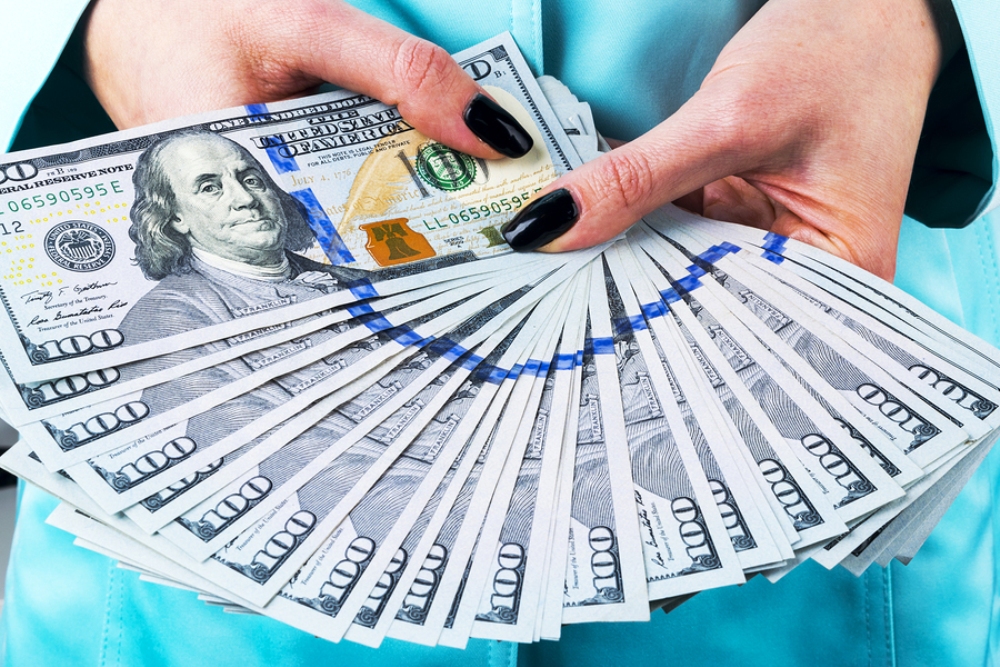
Manual cash counting is tedious and time-consuming, especially for businesses that deal with lots of cash transactions.
Fortunately, a cash counting machine can speed the cash counting process, eliminate counting errors and free up your employees so that they can concentrate on more rewarding tasks.
However, as a business, you want to buy a money counting machine that will give you value for money.
For instance, an international bank might prefer to buy a mixed denomination bill counting machine despite its high price because of the cash counting machine mixed bills feature. Similarly, a small retail business might find a bill counter with a built-in counterfeit detector more valuable than a mixed denomination machine.
If you're stuck on what to look for when buying a banknote counter for your business, here are five factors to consider.
1. Counting Speed
One of the reasons why you're buying a money counting machine is to save time. So, you better go for a money counter that gets the work done quickly.
Compare different machines counting speeds when doing your shopping. Also, don't forget to check if accuracy is maintained even at high counting speeds.
A notable feature that will most likely affect a banknote machine counting speed is its hopper size.
2. Hopper Size and Type
An adequate hopper size not only speeds up the bill counting process but also makes the machine efficient.
A cash counting machine hopper is the slot where you place your banknotes when counting. If the hopper is too small, you'll keep adding more currency to the machine. However, you may only need to stack your bills once with a bigger hopper-sized machine.
Also, some machines may have a big hopper but a smaller carrier capacity. This means that if you place many notes in the hopper, you'll need to remove some of the bills from the carrier tray before the count is complete.
It’s also crucial to consider the hopper type. For instance, some hoppers can count bills even when they aren't neatly stacked. This ensures you don't have to keep straightening your notes before feeding the machine.
Thus, the right hopper size and type are essential factors to consider as they save you time, especially if you handle lots of cash.
However, if your business doesn't do lots of cash transactions, a machine with a big hopper may not make much of a difference.
3. Counterfeit and Error Detection
You need a machine that can detect errors and counterfeit bills. Some machines without the error-detection feature will give you miscounts when you feed them:
· Folded bills
· Torn bills
· Wrong sized bills
· Multiple notes
Additionally, if you often get many counterfeit bills, it's time to invest in a machine with a fake bills detection feature. Identifying counterfeit bills manually is a time-consuming process. Besides, most businesses detect fake money when it's already too late.
Some counterfeit detection features to look out for in money counting machines include ultraviolet (UV) detection, magnetic (MG) detection, and infrared (IR) detection.
4. Mixed Bills Counting
Manual separation of bills is typically a pain-stacking process, especially for large retailers. This is why a mixed denomination machine can be a lifesaver. Such devices have color imaging software or sensors that detect the denomination of every note. The imaging software is also an additional security feature as it helps detect fake bills
Mixed denomination machines are also faster than your standard money counters. Also, such machines prevent sorting errors and can even count currency from other countries.
However, since these machines are expensive, they are ideal for businesses that handle mixed denominations. For instance, banks or international retailers may find them helpful.
Unfortunately, supermarkets and other small businesses that use cash registers may not find such a machine worthwhile because of the use of the cash drawer to sort out different bills.
5. Batch, Value, and Add Features
Some machines have the batch feature that allows the creation of different batch sizes during the counting process. For instance, if you input a given batch number to a machine with this feature, it will count the particular batch size and wait for you to remove the batch of notes.
The value counting feature allows the machine to give you the total value of each denomination.
Some machines also have the add function, which allows you to keep adding to the already provided count.
6. Ease of Use
A good money counter should be easy to use.
Even money counters with multiple features should be user-friendly. The user interface should be easy to read and use. You shouldn't have to keep referring to the manual to remind yourself how to use the machine. Besides, the machine shouldn't have so many buttons that it takes forever for your staff to get used to them.
To determine the usability of a counter machine, perform a test before making a purchase. If you aren't able to do a test, read online reviews on the machine from past buyers.
A bank counting machine speeds up the cash counting process. It also helps detect fake bills, reduces errors, and simplifies cash handling. Use the above features to help you decide on the best bill counting machine for your business.
